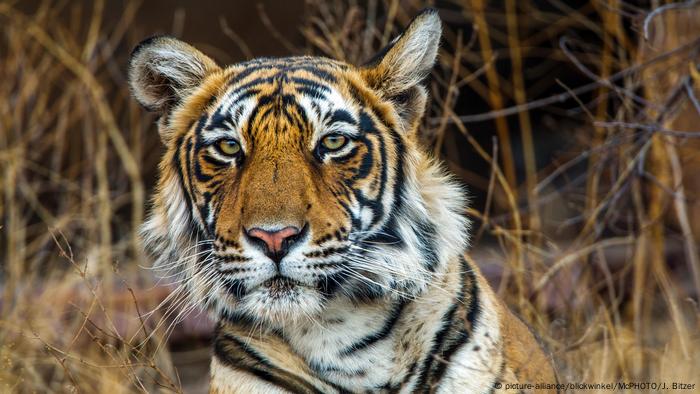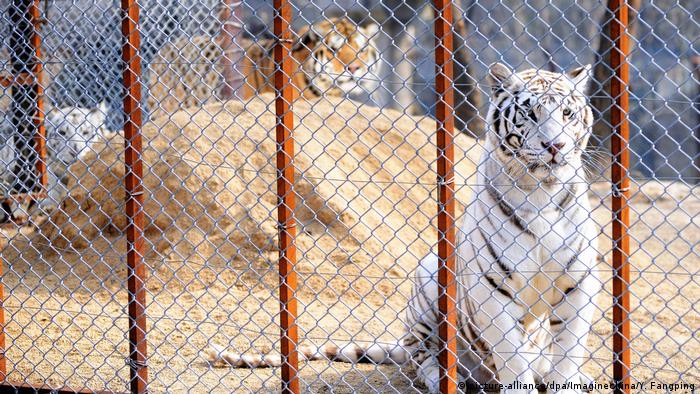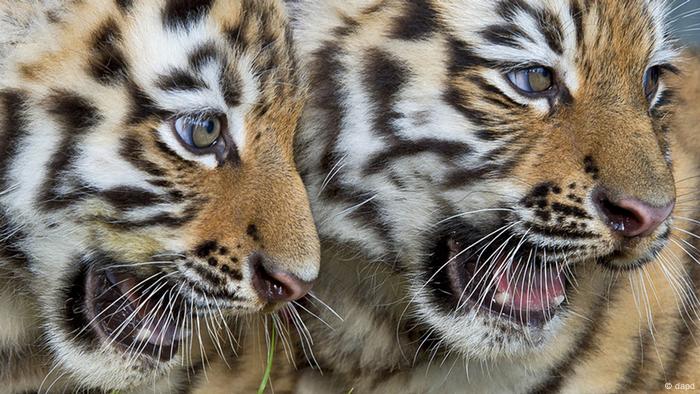A Malayan tiger at a zoo in the southern US state of Florida was shot and killed after biting a man who stuck his arm through a fence, authorities said.
The incident took place on Wednesday evening at Naples Zoo at an enclosure where the 8-year-old tiger, named Eko, lived.
According to a statement released by the Collier County Sheriff’s Office, the man involved sustained “serious injuries” after entering an off-limits area near the tiger’s enclosure.
“Preliminary information indicates that the man was either petting or feeding the animal, both of which are unauthorized and dangerous activities,” the sheriff’s office said.
What happened?
The man, who is in his 20s, worked for a for a outsourced cleaning service that was contracted by Naples Zoo. The business was authorized to clean the zoo’s gift show and restrooms — but not the animal enclosures.
The tiger grabbed the man’s arm after he stuck it through a fence surrounding the enclosure. Authorities who first arrived on the scene tried kicking the enclosure to get the tiger to release the man, but ultimately police said the officer “was forced to shoot the animal.”
The tiger retreated to its enclosure after being shot. Officers later flew a drone into the enclosure and the tiger was not responsive.
While the sheriff department’s initial statement said that the tiger’s condition was unknown, zoo officials later confirmed that the tiger later died, the Associated Press reported.
Naples Zoo said it was closed on Thursday to help authorities and zoo officials conduct investigations into the incident. The decision to close was also “to allow our staff to process what has occurred and to begin the painful healing process.”
Just a day before the deadly incident, Naples Zoo shared a picture of Eko on Twitter.
Malayan tigers are smaller than Bengal tigers and are native to southern and central parts of Malaysia.
They are currently classified as “critically endangered” on the Red List of the International Union for Conservation (IUCN).
This report was written in part with material from the Associated Press.
Edited by: Mark Hallam
-
More tigers now live in cages than in the wild
Admired, feared and on the brink of extinction
Tigers are secretive, solitary animals that need a lot of room to move. From lush jungles in Malaysia and Indonesia to high mountains in Bhutan and mangrove forests in India, the habitats tigers roam in search of food are being lost to deforestation and development. Much of what remains is fragmented into chunks of isolated forest surrounded by roads, farms, towns and cities.
-
More tigers now live in cages than in the wild
Cages, backyards a far cry from Asian forests, savannas
With their sleek, stripey coats, piercing stare and adorable cubs, tigers are highly sought-after as exotic pets and zoo animals. This is especially true in the US — according to the US Fish and Wildlife Service, the total number of tigers in the country “likely exceeds the numbers found in the wild.” It’s estimated there could be from 2,000 to 5,000 tigers living in the state of Texas alone.
-
More tigers now live in cages than in the wild
Some strange things happen in captivity
Only half of tiger cubs survive in the wild. Mothers may refuse to feed their offspring or abandon them for unknown reasons. In captivity, zoos have overcome this by getting female dogs to takeover the feeding of tiger cubs. The dogs don’t seem to know the difference between their own offspring and the tiger cubs, which take around the same amount of time to wean.
-
More tigers now live in cages than in the wild
Three subspecies already lost to extinction
There are nine subspecies of tiger, of which six survive today. The differences are mostly a reflection of extreme climatic changes over thousands of years. The Siberian — or Amur — tiger (pictured), for example, is bigger and hairier than other subspecies. This means it can retain heat in the frosty Siberian wilderness, as it has a smaller surface area relative to its overall mass.
-
More tigers now live in cages than in the wild
Tigers and lions live side-by-side, right? No!
While the six surviving tiger subspecies don’t have a lot of genetic variation, they are each uniquely adapted to their habitats — which are in Asia, not Africa. Some live in tropical forests, others in dry forests, some in marshes and wetlands and some at elevations of 3,000 meters (10,000 feet). That makes it more difficult to relocate them to different parts of the world to boost numbers.
-
More tigers now live in cages than in the wild
Poaching, encroaching and global warming
Although far from being the only issue facing the great cat, climate change poses a major threat to their habitat. A recent study, published in Science of the Total Environment, predicted that sea level rise in the Sundarbans — a mangrove forest stretching across India and Bangladesh — will likely decimate the local Bengal tiger population, the only subspecies adapted to living in mangroves.
Author: Charli Shield
Tiger shot at Florida zoo after biting man
Source:
Pinoy Pop News






0 Comments